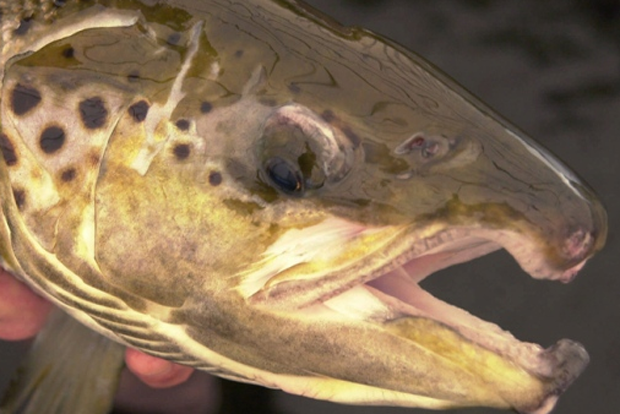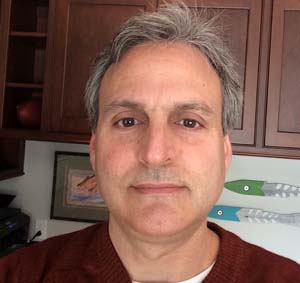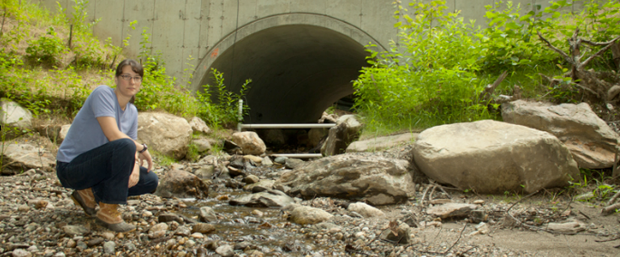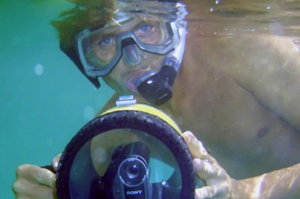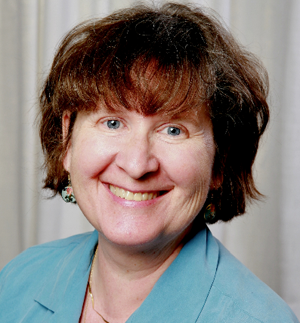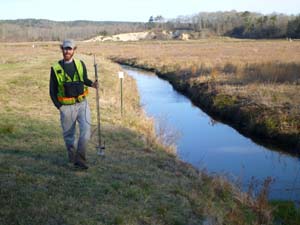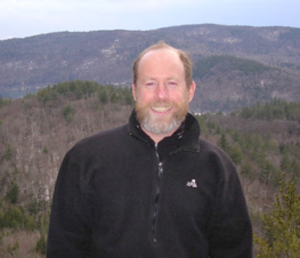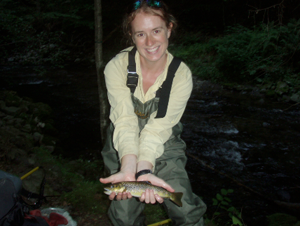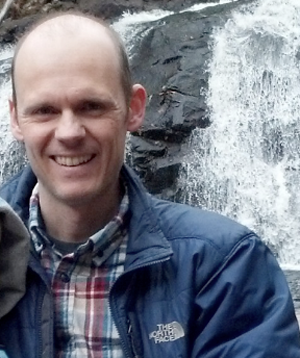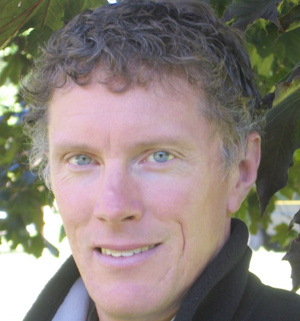First Annual Deborah Pratt Dawson Conservation Symposium.
Join the discussion on March 14-15th in Manchester!
[dropcap]S[/dropcap]ome of the world’s top scientists, ecologists and conservationists share their latest results on why the fish do what they do, and what we need to do to preserve our fisheries.
Tips & Tactics: Mingle with fellow anglers and guides and share time-tested angling techniques.
The only thing for sale at the symposium is conservation, learning and research findings. Everyone at symposium will have the same interests as you do and everyone is approachable. Look forward to a wonderful atmosphere.
You’ll learn more about the fish you chase in two days than in a year on your own.
The symposium presenters
Dr. Michael Cooperman of Conservation International
Dr. Cooperman is a fish ecologist with primary interest in the protection and recovery of small and declining fish populations. Areas of expertise include the physiological-ecology of fish, fish migration, the early life history of fishes, the impacts of dams and other water development projects on river ecosystems, and the management of in-land (aka freshwater) fisheries.
Currently he is the lead investigator of Conservation International’s “Hot Fish” project, a comprehensive research program exploring how freshwater fishes of the tropics will respond to warming water temperatures and the consequences for human food security. He is also co-Principle Investigator for CI’s program to describe the natural history and ecology of socio-economically important fish species of Cambodia’s Tonle Sap Lake and the design of long term monitoring and management plans related to changing land use practices and large-scale hydro-power development within Cambodia.
Michael earned a MS degree in the ecology of river-floodplain systems from the University of Montana in 1998 and his doctorate from Oregon State University in 2004 where his dissertation research addressed the natural history and ecology of the larval life stage of endangered Lost River and shortnose suckers in Upper Klamath Lake, Oregon and the impact of water management policy on sucker populations.
Prior to joining CI in 2011, Michael completed a three year post-doctoral position at the University of British Columbia where he worked on both the effectiveness evaluation of stream restoration for salmon recovery projects and the physiological-ecology of Fraser River Late Run sockeye salmon migration. Michael also served two years as a National Research Council post-doctoral fellow in residence with NOAA-Fisheries studying the ecology and management of Gulf of Maine Atlantic Salmon.
Amy Singler | American Rivers
Amy works for American Rivers’ River Restoration Program managing dam removal projects and promoting efforts to improve river restoration in New England. Her work is focused on improving river habitat connectivity in the Connecticut River Watershed. She also leads American Rivers’ work on culvert and stream crossing policy and implementation both in New England and nationally. Amy has been with American Rivers since 2009 in a position in partnership with The Nature Conservancy’s Connecticut River Program leading stream connectivity efforts in the watershed. Prior to her current position Amy worked for the Massachusetts state rivers program where she worked as a project manager and outreach coordinator, working statewide to promote river protection and implementation of restoration projects.
Having grown up in New England, Amy enjoys exploring the landscape from the shores to the mountains by foot, ski and boat. Recently she has her goals set on honing her experience fly fishing this coming season.
Amy holds a M.S. in Water Resources Management from the University of Wisconsin, Madison, and a B.S. Ecology and Evolutionary Biology from the University of Rochester in New York.
Amy Singler Abstract:
Mapping Dam Removal Success: Lessons from United States Dam Removals
Dam Removal is arguably the most effective tool we have for restoring river habitat and fish passage. While some of the more than 80,000 dams in the United States provide important water supply, flood control and recreation functions, most no longer serve the original purpose for which they were built. Many dams are relics of old mills and the industrial revolution and are no longer maintained and in need of repair. The benefits of other larger dams may no longer outweigh the significant impacts to fisheries and river habitat. Dam removal restores river function as sediment, water, nutrients and fish are able to move again unimpeded. Dam removal also eliminates maintenance requirements for owners and the potential danger of failure at unmaintained dams during floods. As the rate of dam removal has increased we are seeing positive results to fish and river habitat, and we are learning just what it takes to make projects successful.
American Rivers maintains an online map of over 1,100 dam removals across the United States. The interactive map provides both a tool for river advocates and a lens through which to view the success of dam removal. Reviewing the map also demonstrates areas of success and how we might advance the goal of river restoration through dam removal. Using this map as a baseline for information, this presentation will 1.) Review patterns of dam removal rates and geography over time; 2.) Discuss what these changes mean for river restoration and fisheries management; and, 3.) Identify issues and geographies ripe for engagement in order to facilitate more dam removal.
Christopher Haak | Bonefish & Tarpon Trust
Chris has an unconventional background for a fisheries scientist. A graduate of NYU’s Tisch School and an Emmy-winning visual effects artist in his first career, Chris spent nearly every moment of his vacation time with a fly rod in his hand. Chris’s desire to learn more about the fish he loved to catch led him to attend the 3rd International Bonefish and Tarpon symposium in 2008, where he was finally “hooked” by fisheries science. Chris is now in the final year of his doctoral research in the Danylchuk Lab at the University of Massachusetts, where, working closely with the Bonefish & Tarpon Trust, he studies the ecology of bonefish in The Bahamas and greater Caribbean. Ultimately, Chris hopes to merge his disparate careers, using visual media to communicate science and promote conservation more effectively.
Haak Speech Abstract:
The Pivotal Role of Technology in Advancing Bonefish Science and Conservation
Bonefish (Albula vulpes) support valuable recreational fisheries throughout the tropical western Atlantic Ocean. Thanks largely to the efforts of conservation-minded anglers, many of these fisheries are now exclusively catch-and-release, and substantial progress has been made in recognizing and minimizing the sources of angling stress and post-release mortality. Despite these developments, bonefish populations remain at risk from human-induced disturbance, habitat loss and degradation. Efforts to mitigate these threats and to manage bonefish stocks have been impeded by voids in our understanding of the species’ life history and fundamental resource requirements. However, recent technological advances have enabled biologists to begin bridging these knowledge gaps. State-of-the-art acoustic telemetry systems coupled with accelerometers are able to resolve fish movements at fine spatial scales (approaching 1 meter) while simultaneously measuring activity levels, providing an improved understanding of habitat use patterns and the energetic costs imposed by disturbance. Breakthroughs in stable isotope geochemistry make it possible to “look back in time” to identify the nursery habitats utilized by adults in early life, and consequently to estimate the importance of different nurseries in maintaining adult populations, guiding habitat preservation efforts. Compact high-resolution underwater video systems yield new perspectives on previously unobservable life-stages, revealing behaviors and inter-species relationships that may play an important role in recruitment success. Finally, three-dimensional oceanographic modelling, complemented by next-generation molecular genetic techniques, are providing insights into population connectivity and the recruitment dynamics that maintain and renew bonefish stocks.
Intercampus Marine Science Graduate Program, Department of Environmental Conservation, University of Massachusetts Amherst, Amherst, MA. Fish Ecology and Conservation Physiology Laboratory, Department of Biology and Institute of Environmental Science, Carleton University, Ottawa, Ontario, Canada. Flats Ecology and Conservation Program, Cape Eleuthera Institute, Eleuthera, The Bahamas. Florida Fish and Wildlife Conservation Commission, Fish and Wildlife Research Institute, St. Petersburg, FL.
Cynthia Browning | Batten Kill Watershed Alliance
Cynthia Browning currently works as the executive director of the Batten Kill Watershed Alliance, serves on the Arlington Selectboard, and represents the towns of Arlington, Manchester, Sandgate, and Sunderland in the Vermont House of Representatives. She was born in Rochester, NY, and grew up in a small town called Eastchester some distance north of New York City, but she spent many summers with her grandparents in West Arlington.
She also lived in North Carolina and Florida for periods of time.
She graduated from Bennington College with a BA in Social Sciences. After working for the Brookings Institution in Washington DC for a year she entered graduate school in Economics at the University of Michigan, Ann Arbor, eventually receiving both a Masters and a Ph.D. in Economics. Ms.
Browning taught Economics at Bates College and Smith College.
After moving to Vermont in 1998 Ms. Browning taught Economics at Williams College for two years before shifting to working for local businesses and then becoming involved in the development of the nonprofit organization that became the Batten Kill Watershed Alliance. She has devoted her energies to the fulfillment of the Alliance’s mission of good stewardship for the Batten Kill and all of its tributaries.
Browning Speech Abstract:
The Testimony of the Trout: “Riverwood” is Good
This will be the story of successful trout habitat restoration in the Batten Kill in NY and VT. Investments in this treasured river were based on scientific analysis, facilitated by grassroots participation, and funded through public and private resources and expertise.
A decline in the wild brown trout population in the Batten Kill was identified – especially the small to medium sized fish. Scientific study indicated that this might be due to a lack of cover and shelter. Cover and shelter comes from deep pools, overhanging trees, undercut banks, large stones, and tree materials in the channel. It serves to protect fish from predators, floods, ice, and hot weather.
Structures of wood and stone have been installed in the Batten Kill to provide cover and shelter. Scientific monitoring has shown a significant increase in the trout population of small to medium sized trout.
We are continuing the installation of cover and shelter structures in both NY and VT to improve habitat in the short run. But in the long run, we must ensure that the river can sustain such productive habitat by planting or preserving trees and brush on all riverbanks. We must also improve river dynamics so that fallen trees are retained in the channel rather than swept out into the flood plain, and so that river channels are not very wide and shallow.
Nick Nelson Inter-Fluve, Inc. / 220 Concord Ave., 2nd Floor / Cambridge, MA 02138 / nnelson@interfluve.com
Nick has seven years of experience in fluvial geomorphology and manages Inter-Fluve’s New England office in Cambridge, MA. He is currently working on all phases of more than 10 dam removal and river restoration projects in MA and around the country, leading project management, construction oversight, topographic surveying, and restoration design.
His work has focused on urban river restoration through dam removal and channel restoration/rehabilitation planning and design, geomorphic and habitat assessments, and GIS and hydraulic analyses.
Nick has taught classes at the University of Minnesota and Northeastern University and has contributed in teaching geomorphology to conservation commissioners in MA. He is currently on a task force to aid in developing geomorphic and stability assessment protocols for MA rivers.
Nick Nelson Speech Abstract:
River restoration is an expanding field in many regions of the country. An ever increasing number of agencies, organizations, and recreationalists such as fishermen/women are taking an interest in restoration and the general public is becoming more accustomed to hearing about dam removals, improving fish passage, enhancing habitat and restoring waterways. Funding, however, has not necessarily kept pace with the increased number of proposed restoration projects. Resource managers are often tasked with improving stream functionality and habitat with minimal resources. They must decide which projects can provide the most benefit per dollar spent. While the limited funding can produce design plansets and constructed projects, this does not necessarily mean that habitat has been improved significantly or ‘natural’ stream and floodplain functionality restored. Dams can be removed without providing substantially improved habitat. Stream stabilization and habitat structures can be built that may do more long-term harm than good. Many completed projects look engineered and constructed, rather than blending into the landscape. If designed and constructed properly, however, the functionality of rivers and floodplains can be restored and provide improved aquatic and riparian habitat without appearing to be man-made. This presentation discusses the challenges of river restoration with limited budgets and the importance of properly designed in-stream and out-of-channel geomorphic and habitat features.
Trout Unlimited’s Presentation Abstract
Evaluating stream resiliency through hydraulics, aquatic science, and stream simulated designs.
The only native trout of the Northeast, the Eastern Brook Trout has faced significant loss of range over the past 50 years. Successfully restoring wild brook trout populations to rivers and headwater streams is a conservation strategy requiring hands on management as well as a variety of technological tools to improve sustainable habitat, climate resiliency, and improved water quality.
Trout Unlimited recently developed a watershed based tool to assess the hydraulic capacity of road stream crossing under severe weather conditions. This GIS and Excel model tool has been designed to allow community’s to thoroughly assess infrastructure vulnerability and to help prioritize restoration of critical road stream crossings. From a conservation perspective, restoring instream hydraulic functions translates immediately into resilient aquatic eco-systems.
Following assessment and prioritization efforts, TU has the ability to assist communities and other partners by providing design and construction oversight services to replace problem road-stream crossings. TU uses the US Forest Service’s Stream Simulation Methodology (SSM), which is a method for designing and building road-stream crossings that accommodates AOP, allow for more natural channel function, and includes design details that maximizes the long-term stability of the new structure. TU is utilizing this methodology for projects throughout New England including Vermont, specifically along the Mettawee River in Dorset.
Conservation science requires monitoring our restoration efforts. TU aims to increase its ability to remotely monitor project sites using a combination of improved technologies. With devices like Bluetooth enabled temperature and flow digital data loggers, volunteers and project partners can quickly and easily download collected stream data onto a smartphone or laptop and send them to TU science team. Regular improvements in remote solar cell technology additionally increases our data collection and monitoring efforts in remote areas. With this additional information on how our conservation efforts impact streams over time, it helps us refine our methods and efforts so we can continue to do the most good across the landscape.
Colin Lawson, New England Culvert Project Coordinator, Trout Unlimited
Concord, NH / 603-228-2200 / clawson@tu.org
Mr. Lawson joined Trout Unlimited (TU) in 2009 as the New England Culvert Project Coordinator. His focus is on reconnecting Eastern brook trout habitat in priority New England watersheds through the removal, replacement or retrofit of currently impassable road stream crossings. Colin also strives to improve aquatic habitat utilizing large wood and other structural additions through instream channel restorations across both private and public lands. Colin works with TU’s state councils and chapters, local, state and federal agencies, landowners, and other non-profit organizations in the Green and White Mountain National Forests and across Massachusetts, New Hampshire and Vermont. Prior to joining TU, Colin managed cross country ski areas in Vermont before returning to graduate school to study environmental science and hydro-ecology at Antioch New England University.
Erin Rodgers, Ph.D., Field and Research Manager, New England Culvert Project, Trout Unlimited
Bernardston, MA / 603-852-8110 / erodgers@tu.org
Erin recently completed her doctoral degree at Antioch University New England during which she studied the effects of Hurricane Irene and Tropical Storm Lee flooding on stream communities and the population dynamics of brook trout in the Delaware Water Gap National Recreation Area.
Having joined Trout Unlimited’s New England Culvert Project in 2011, Erin now leads much of the field work in Vermont, western Massachusetts, and western New Hampshire. She focuses on assessing the links between aquatic organism passage and flood vulnerability of bridges and culverts, then working with towns and other agencies to replace the worst structures. She has also started to increase the number of in-stream habitat restoration projects as well as establish a new research and monitoring program for NECP.
Gabe Bolin, P.E., New England Stream Restoration Specialist, Trout Unlimited
Concord, NH / 603-809-6101 / gbolin@tu.org
Gabe is a water resources engineer with 15 years of experience specializing in watershed management and ecological restoration projects. In his role at TU, Gabe develops hydrologic and hydraulic models to support stream restoration projects, bank stability analyses and aquatic organism passage (AOP) projects. Gabe’s AOP projects have been on streams and rivers that have ranged from low to high gradients (1% to 10%), typically include bank restoration components that incorporate wood and/or large wood complexes and typically promote connection to floodplains where appropriate. Gabe has performed this work in semi-urban and forested streams, rivers and watersheds. Gabe is a professional engineer in NH and NJ, and earned his B.S. in BioEnvironmental Engineering from Rutgers University and his M.E. in Coastal Engineering from Stevens Institute of Technology.
Jonathan Carr, M.Sc. | Atlantic Salmon Federation
Jonathan Carr is the Executive Director of Research and Environment at the Atlantic Salmon Federation (ASF), located in St. Andrews, New Brunswick, Canada. He has over 20 years of experience in the management, restoration and conservation of wild salmonid populations. Jonathan has been published widely and has served in a number of capacities related to fisheries research and policy. Much of his recent research has focused on understanding the marine ecology of Atlantic salmon.
Jonathan Carr Speech Abstract:
Unraveling the Mystery of Atlantic Salmon Migrations at Sea
Wild Atlantic salmon populations in Eastern North America have precipitously declined over the past three decades. Extensive research has revealed many factors that limit juvenile production in freshwater, but less is known about the salmon’s marine phase. Decreasing trends in marine survival (smolt to adult), and in some areas where there has been no decrease in smolt production, points to the marine environment as the greatest threat.
The Atlantic Salmon Federation (ASF) has been leading the effort to improve understanding of salmon migration and distribution at sea. We have helped to develop and refine sophisticated acoustic tracking equipment to follow juvenile and adult salmon from their natal rivers out to sea to map their migration paths and survival. Since 2003, we have tracked more than 2,300 juvenile salmon (smolt) from three rivers draining into the Gulf of St. Lawrence.
In recent years, adult salmon have also been tracked using acoustic and satellite tags. Our tracking results have shown that smolt begin to suffer heavy losses in the estuaries and during their first few months at sea. From the satellite tracks, we are beginning to determine when and where salmon are dying and are identifying specific predators. Only by locating the areas where losses occur and identifying the causes of loss, will we be in a position to implement management strategies to address limiting factors. Telemetry research is a vital way to further our understanding of the drivers of the current declines in wild Atlantic salmon populations at sea.


